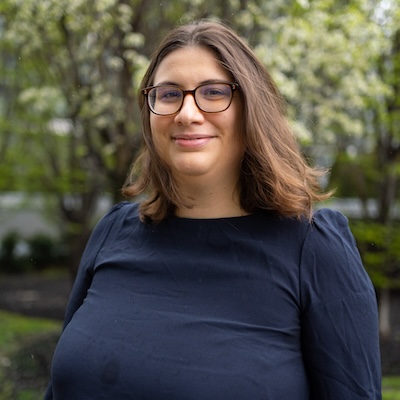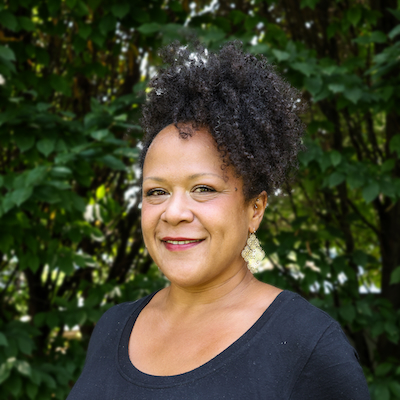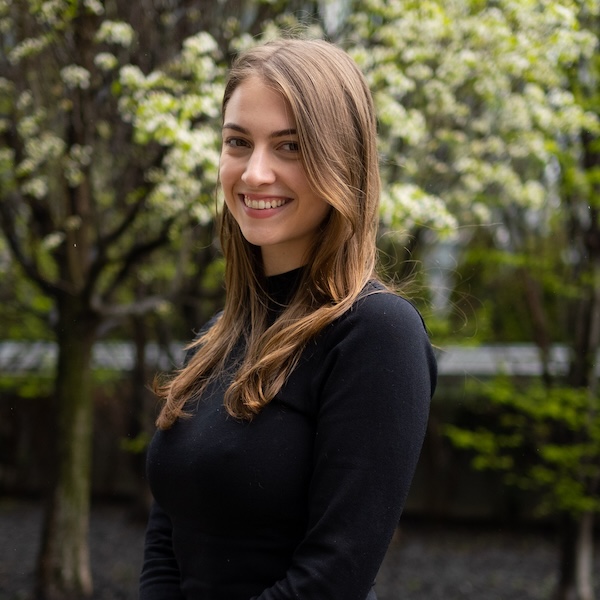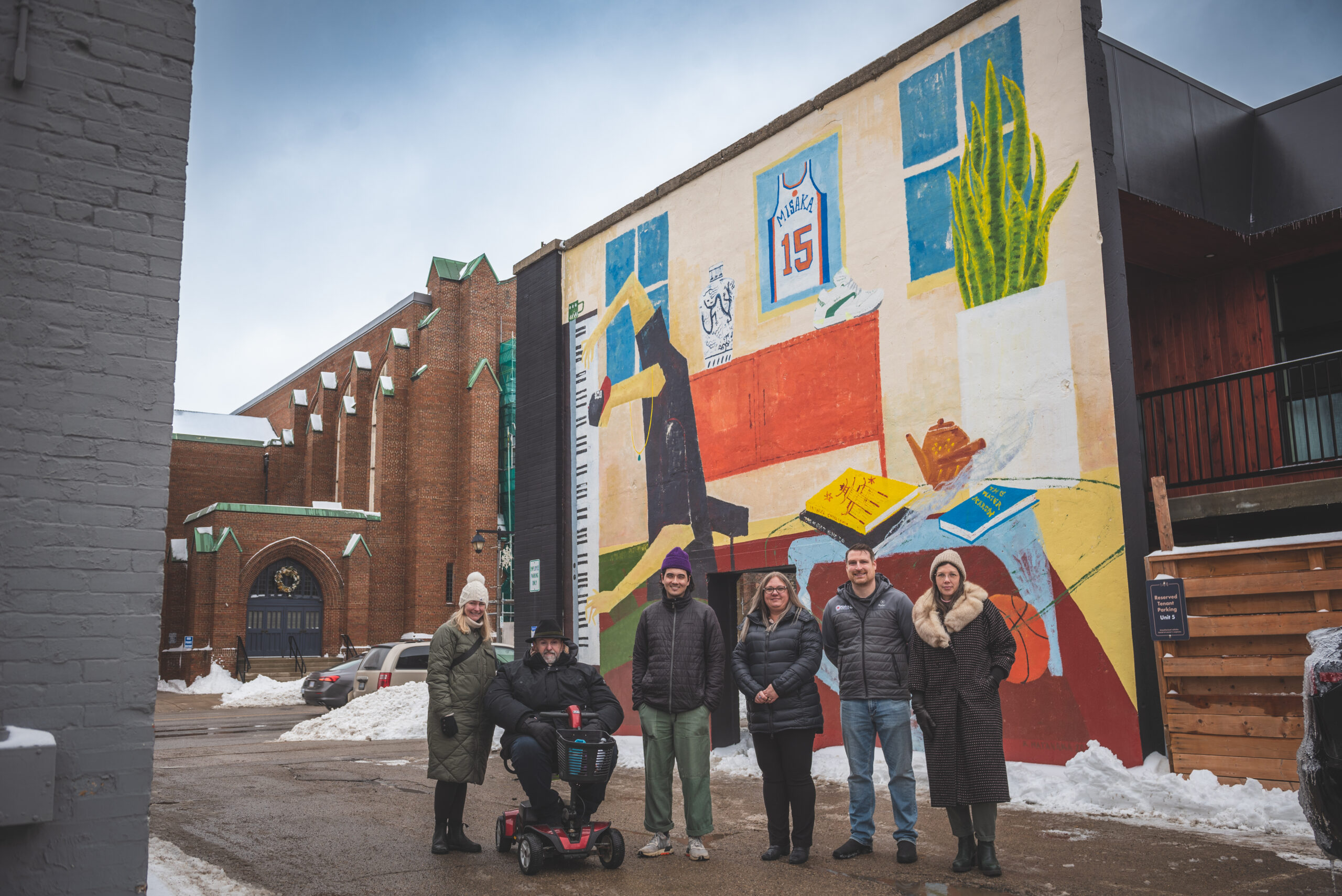What is cultural planning and development?
Learn about the STEPS Cultural Planning portfolio and the team members who help the range of projects come to life!
Community members, representatives from the Downtown Milton Business Improvement Area, and Members of Parliament inaugurate a mural that celebrates the unique elements of Milton, Ontario
Artist credit: Omar Hopkinson and assistant Andrés Correa
Photo credit: Mike Streeter
Cultural planning is a process of identifying cultural resources and using them strategically to promote economic prosperity, social equity, environmental responsibility, and cultural vitality. This planning involves local leaders, communities, and policy-makers with an overarching goal of improving the quality of life in a municipality.
STEPS’ Cultural Planning services include developing municipal cultural plans, working with Business Improvement Areas and community groups to bring public art to main streets, piloting stakeholder roundtables, public conversations, and knowledge exchange strategies, and producing research or resources like our upcoming main street recovery toolkit.
We are excited to bring these services to more communities with our recently expanded Cultural Planning team of community-engaged creative placemakers, planners, and project coordinators with a shared passion for equitable and inclusive public spaces.
Meet the cultural planning team

SOPHIE MITJAVILE
Cultural Planning Manager
What do you love about Cultural Planning?
I find it particularly rewarding to see the impact of our work on the ground. It’s thrilling to have a chance to contribute to plans, installations and events that encourage dialogue on important issues, help bring people together and foster a sense of pride, and to support the work of talented artists. I am passionate about projects that help build stronger communities and more inclusive public spaces.”
What has been your favourite STEPS project to work on and why?
“One of the most rewarding experiences I’ve had at STEPS so far was working on the first Municipal Cultural Plan for the City of Stratford. The project encompassed everything I love about cultural planning. It was an honour to develop a strategy that supports the community’s dreams and desires and helps culture thrive in Stratford. I am excited to see how this plan is implemented in the coming years and how it will positively impact the city’s cultural landscape.
Looking ahead, I am particularly thrilled about our Accessible Art and Placemaking Project, which we will be developing throughout 2023. Our aim is to explore how art and creative placemaking can be used to increase the accessibility of public spaces. We are currently consulting experts in the d/Deaf and disability arts community, and it has been an incredible privilege to hear their insights and ideas about how art can make our cities more welcoming to people of all abilities. We will be presenting two installations over the summer months in downtown Toronto, and I can’t wait to collaborate with talented artists to help bring their vision to life and transform public spaces.”

Ima Esin
Cultural Planner
What do you love about Cultural Planning?
What has been your favourite STEPS project to work on and why?
“Oh, this is a tough one! Each project I’ve been able to support is close to my heart, but a few stand-outs would be:
- The Mane Event, a series of community arts and hair workshops with D’Andra Montaque, culminated in Our Crowns, a permanent public art mural by Curtia Wright sharing the importance of hair in black identity and celebrating the sacrifices and achievements of Jamaican immigrants while highlighting the vital role salons and barbershops have played in shaping the cultural fabric of Little Jamaica.
- From Weeds We Grow is a long-running running project rooted in North Etobicoke. This project has allowed me to explore my own connections to the land and commitment to Indigenous reconciliation while offering community-led arts, movement, and capacity-building opportunities in natural urban spaces.
- Crossroads with Kseniya Tsoy is a project I’m very focused on right now – rooted in North York’s Willowdale community, I have the pleasure of supporting Kseniya’s vision for a site-specific, community-engaged, legacy mural exploring the unique cultural tapestry of Willowdale as a meeting place of global perspectives and cultural lineages while honouring the Indigenous lands we gather on today.”

MADISON KENNEDY
Cultural Planner
What do you love about Cultural Planning?
I enjoy that the job allows me to be creative and work with a fantastic team of innovative people to produce impactful projects supporting artists while celebrating culture.”
What has been your favourite STEPS project to work on and why?
“There have been so many projects that I have enjoyed working on; it isn’t easy to choose my favourite. When I first joined STEPS, I had the pleasure of working with Wenting Li on her Hope in Chinatown Mural. I loved being on-site, painting and interacting with the community. This project will always have a soft spot in my heart since it was the first project I worked on. The second one is Moises Frank‘s Sharing Stories of Migration; this might have been one of the most challenging projects I have worked on, but I loved everything it taught me and enjoyed getting to know the BIA and artists. Overall, it is a beautiful mural that supported our Inspired Art Impact research project and won the Transformative award through I HeART Main Street! Each project at STEPS is unique and fun to work on; I am looking forward to what the summer has in store!”
Our cultural planning projects

FAQ
What is cultural planning?
Why is it important to develop a cultural plan?
A cultural plan provides an opportunity for jurisdictions to:
- Expand and enhance artistic and cultural opportunities for the arts/creative community and the broader community
- Strengthen, leverage, and integrate artistic and cultural resources across all facets of local and national government
- Advance broader objectives in the areas of economic prosperity, social equity, the environment, and cultural vitality
What is the community mapping process?
Community mapping is also a way for community members to outline issues or challenges, and identify ways in which these challenges or barriers can be responded to. This leads to facilitating the building of links between communities and institutions or municipalities while providing locally-driven transparent solution processes.
What is the focus of asset-based community development?
This article was last edited on December 10, 2024.

